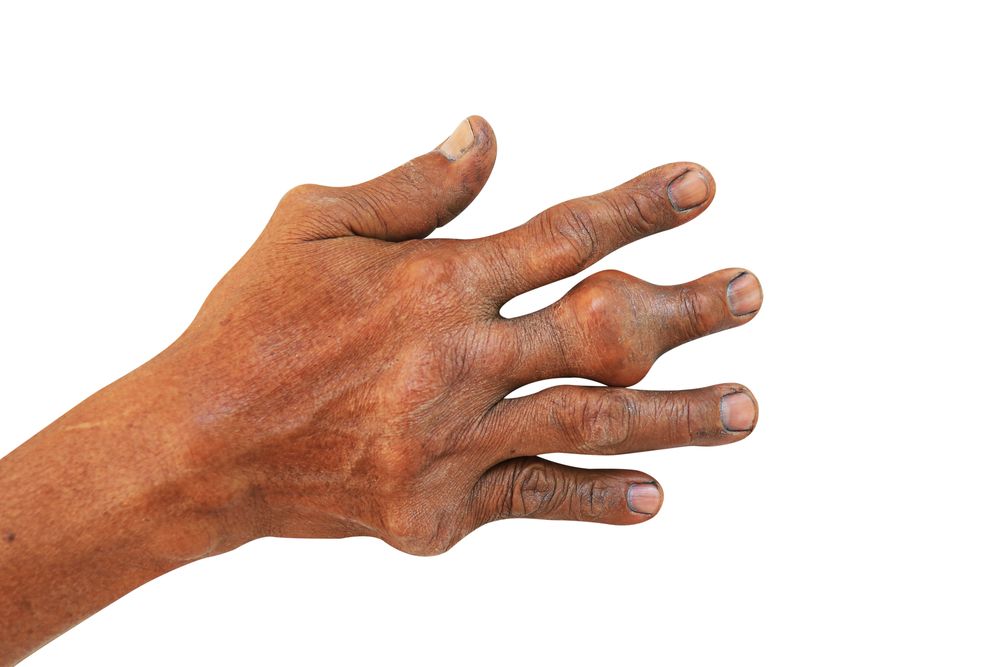Serum Urate, Ethnicity, and Hypertension as Predictors of Gout Risk
Hyperuricemia remains the leading risk factor, but the runners-up may surprise you.
Image credit: ©seneesriyota/Shutterstock.com

While serum urate is known to be a strong predictor of gout, a new study indicates ethnicity and hypertension independently and additively increase the risk of incident gout.
The study confirms hyperuricemia (serum urate concentration > 7 mg/dL) as the most important risk factor for gout. At and above this physiological threshold, monosodium urate crystals form and the incidence of gout increases substantially. However, no previous studies had explicitly considered whether other variables, such as ethnicity and hypertension, have a direct causal effect on the risk of gout-or whether hyperuricemia mediates the association between these risk factors and gout.
Results of the study by Mengying Sun and colleagues at Michigan State University in East Lansing, MI, were published in Arthritis Research & Therapy.1 The results show that ethnicity and hypertension are predictive of gout risk, and that serum urate levels cannot fully explain these associations.
The study
The primary objective of the study was to identify factors that affect the risk of developing gout. The investigators used data from the Atherosclerosis Risk in Communities (ARIC) study, a prospective epidemiologic trial conducted in four US communities during 1987 to 1998. The study collected information at baseline (1987 to 1988) and at three follow-up visits that were conducted every 3 years.
Clinical variables included demographics (sex, ethnicity, and age) and serum urate (mg/dL). BMI (kg/m2), systolic blood pressure (SBP; mm Hg), glucose (mmol/L), high-density lipoprotein (mmol/L), low-density lipoprotein (mmol/L), creatinine (mg/dL), and triglycerides (mmol/L) were chosen for their representation of important comorbidities of gout: obesity, hypertension, type 2 diabetes, renal disease, and cardiovascular disease.
Among a starting population of 9503, there were 8818 individuals who met the study criteria. Of these, 56.2% (4959) were female, 80.2% (7071) were white, and 19.8% (1747) were African American. There were 216 gout cases over the 9-year follow-up period. The average number of new gout cases was 2.7 per 1000 people per year.
Please click below for the findings and implications for clinicians.
The findings
As expected, the results confirmed and extended results from previous studies that showed a strong association between serum urate and gout risk. A novel aspect of this analysis, however, suggests the effects of being African American and having high blood pressure are additive to the risk of developing gout in the future.
While the risk of gout increases exponentially as a function of serum urate, the results also demonstrate the risk is higher for hypertensive African Americans than for normotensive European Americans. “For example, given a serum urate of 6 mg/dl at baseline, the risk of developing gout for hypertensive African Americans more than doubles to 3% from 1% for normotensive European Americans,” the researchers stated. “At 8 mg/dl, the risk increases to 13% from 5% for hypertensive African Americans and European Americans, respectively.”1
Thus, after accounting for serum urate levels, ethnicity and SBP were found to be independently and additively associated with gout.
Implications for clinicians
This study has a few potential limitations. In the ARIC cohort, white individuals were, on average, 1 year older at baseline than African American individuals. This could potentially indicate that age may confound the effect of ethnicity. However, when all predictors were fitted jointly, age did not have a significant effect on gout risk, nor was there an age-by-ethnicity interaction effect on incident gout.
Similarly, baseline mean SBP and serum urate level were higher in African Americans than in European Americans; thus, the percentage of participants taking antihypertensive medication was 41.6% for African Americans versus 22.8% for white individuals. Because antihypertensives also increase serum urate levels, it is possible that diuretic use by African Americans could cause higher gout risk among this cohort. However, previous studies of diuretic use and increased gout risk show that the effect is nullified by accounting for the serum urate level.
Overall, the results confirm that serum urate is a strong predictor of incident gout. The findings also demonstrate that both ethnicity and hypertension independently and additively increase the risk of incident gout. For serum urate levels near the crystallization threshold (6 to 8 mg/dL), African Americans and people with hypertension are at two to three times greater risk for gout.
References:
1. Sun M, Vazquez AI, Reynolds RJ, et al. Untangling the complex relationships between incident gout risk, serum urate, and its comorbidities. Arthritis Res Ther. Published online May 3, 2018. DOI: 10.1186/s12075-018-1559-3.